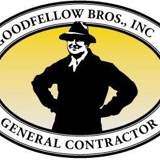Information
-
Audit Title
-
Document No.
-
Client / Site
-
Conducted on
-
Prepared by
-
Location
-
Personnel
-
Space ID Number
-
Date of last assessment
Confined Space - must meet all of the criteria below
-
Is large enough or so configured that an employee can bodily enter and perform work and
-
Has limited or restricted means for entry and exit and
-
Is not designed for continuous employee occupancy
Permit Required Confined Space -must be a confined space and meets any of the criteria below
-
Contains or has the potential to contain a hazardous atmosphere or
-
Contains a material that has the potential for engulfing an entrant
-
Has an internal configuration such that an entrant could be trapped or asphyxiated by inwardly converging walls or by a floor that slopes downward and tapers to a smaller cross-section or
-
Contains any other recognized serious safety or health hazard
Authorized Entry Points
-
Top
-
Side
-
Bottom
Hazards - Explosive Atmosphere
-
Source type
-
Quantity and quality (LEL)
-
Severity
-
Hazard abatement method
Hazards - Combustible Material
-
Source type
-
Quantity and quality
-
Severity
-
Hazard abatement method
Hazards - Electrical Circuits
-
Source type
-
Quantity and quality
-
Severity
-
Hazard abatement method
Hazards - Toxic Gases
-
Source type
-
Quantity and quality (PEL)
-
Severity
-
Hazard abatement method
Hazards -Toxic Material
-
Source type
-
Quantity and quality
-
Severity
-
Hazard abatement method
Hazards - Thermal Hazards
-
Source type (degrees Fahrenheit)
-
Quantity and quality
-
Severity
-
Hazard abatement method
Hazards - Machinery
-
Source type
-
Severity
-
Hazard abatement method
Hazards - Slip and Fall Hazards
-
Source type
-
Severity
-
Hazard abatement method
Hazards - Engulfment Hazards
-
Source type
-
Severity
-
Hazard abatement method
Hazards - Entrapment Hazards
-
Severity
-
Source type
-
Hazard abatement method
Hazards - Pneumatic/Kinetic Energy
-
Source type
-
Severity
-
Hazard abatement method
Personal Protective Equipment Required
-
Gloves
-
Coveralls
-
Hearing protection
-
Safety glasses
-
Hard hat
-
Goggles
-
Air supplied respirator
-
SCBA
-
Line fed
Ventilation Requirements
-
Space volume in cubic feet
-
Natural circulation - no atmospheric hazards in place. Additional ventilation may be required for worker comfort, hot work, grinding, or other operations that would produce airborne fumes, mist or dust. Entry Supervisor must assess additional ventilation requirements based on tasks to be performed in the space prior to time of entry.
-
Mechanical ventilation
Supply
-
Volume, in cubic feet per minute
-
Point
Exhaust
-
Volume, in cubic feet per minute
-
Point
Local
-
Volume, in cubic feet per minute
-
Point
Ventilation Formulas and Requirements
-
20 Air Changes per Hour. (ACH) required for duration of entry. 20 ACH = space volume x 20
-
Adequate Blower Capacity (ABC). ABC = space volume x 20 ACH, divided by 60 minutes.
-
Initial Purge Time. 7.5 x space volume, divided by effective blower capacity.
Required Rescue and Safety Equipment (check if required)
-
Lifeline
-
Body harness
-
Floor level opening barrier
-
Tripod
-
Powered communication
-
Portable lighting
-
Atmosphere make and model
-
Electrical equipment
-
Monitor
-
Man winch
-
Fall arrest unit
-
Emergency retrieval line
-
Blower
-
Vent saddle
-
Vent truck
-
Ladder
-
Emergency escape respirators
APR Respirator Cartidges
-
Acid/gas
-
OV
-
DMF
-
N-95
-
R-95
-
P100
Acceptable Entry Conditions
-
Confined space entry permit closed
-
Oxygen 19.5-23.5%
-
Lower explosive level 10%
-
Toxic fumes/vapors less than PEL
-
No engulfing materials in space
-
Continuous air monitoring
-
Space drained, flushed
-
Training verified for Supervisor, entrants and attendants
-
LOTO electrical components in use
-
LOTO mechanical components in use
-
LOTO all pipes to and from space
-
Forced mechanical ventilation established and maintained
-
No hazardous chemicals or materials
-
Rescue team available
-
Pre-entry brief completed
-
Training verified for rescue team
-
Maximum internal temperature
-
Minimal internal temperature
Communication Procedures (between attendant and entrants)
-
Wireless radio
-
Line radios
-
Verbal from access
-
Line of sight
Rescue Procedures
-
Self rescue
-
Non-entry rescue
-
Rescue team entry
Notes
-
Notes
Determination
-
This space has been determined to be a:









